Somatic Trauma Resolution
Traumatic symptoms are not caused by the triggering event itself. They stem from the frozen residue of energy that has not been resolved and discharged in the nervous system”
~ Peter Levine
Trauma results from any event that overwhelms a person’s capacity to cope. The common ingredient is helplessness. When our capacity to defend ourselves by running, fighting, or freezing is not successful the unreleased survival energies stay stuck in our nervous system. We stay in survival mode and we develop symptoms of trauma. If we do not release this energy from our nervous system where it is stuck, we develop anxiety and panic and other psychosomatic and behavioral problems. The light and joy seems to go out of our life. When we discharge trauma, we invite light and joy back in and open the door to our own inner healer. Our natural state of love and harmony returns.

In terms of enhanced resiliency, victims once healed will never be “normal’ again, but, instead, often exceed their own expectations. Resolved trauma leads survivors to expand their range of resiliency and capacities because. In order to recover, they must access resources they may never have accessed otherwise. During the completion stage of recovery, the client often enjoys a treasure hunt- exploring an unfolding new life that includes mastery, empowerment, and the inner knowledge that the challenge of trauma can be met.
— Dr Diane Poole Heller
Unprocessed pain keeps our system of self-preservation on permanent alert. In addition to sudden intrusive memories, a wide range of situations, many non-threatening, may activate the alarmingly high levels of pain and fear stored in our body. Our partner might raise her voice in irritation, and the full force of our past wounds—all the terror or rage or hurt that lives in our body—can be unleashed. Whether or not there is any present danger, we feel absolutely at risk and compelled to find a way to get away from the pain.
In order to make it through such sudden and severe pain, victims of trauma typically dissociate from their bodies, numbing their sensitivity to physical sensations. Some people feel “unreal,” as if they have left their body and are experiencing life from a great distance. They do whatever they can to keep from feeling the raw sensations of fear and pain in their body. They might lash out in aggression or freeze in depression or confusion. They might have suicidal thoughts or drink themselves senseless. They overeat or starve themselves, use drugs, obsess, and in other ways try to numb or control their experience. Yet the pain and fear don’t go away. Rather, they lurk in the background and from time to time suddenly take over.
Dissociation, while protective, creates suffering. When we leave our bodies, we leave home. By rejecting pain and pulling away from the ground of our being, we experience the dis-ease of separation—loneliness, anxiety, and shame. Author and psychotherapist Alice Miller lets us know that there is no way to avoid what’s in the body. We either pay attention to it, or we suffer the consequences:
The truth about our childhood is stored up in our body, and although we can repress it, we can never alter it. Our intellect can be deceived, our feelings manipulated, and conceptions confused, and our body tricked with medication. But someday our body will present its bill, for it is as incorruptible as a child, who, still whole in spirit, will accept no compromises or excuses, and it will not stop tormenting us until we stop evading the truth.
SYMPTOMS OF TRAUMA
- Anxiety/Panic attacks and phobias
- Feeling disconnected and detached
- Feeling isolated and alone
- Depression
- Fears and Helplessness
- Hyper-vigilance
- Hyperactivity
- Mood swings
- Weight gain
- Extreme sensitivity to light and sound
- Insomnia
- Nightmares
- Loss of memory
- Physical pain
- Chronic Fatigue
- Loss of vitality
- Constriction
- Dissociation
- Reduced ability to deal with stress
TREATMENT STRATEGY & TOOLS FOR SOMATIC TRAUMA RESOLUTION
- Recognition that the trauma survivor actually did survive the trauma.
- RESOURCES – Develop an inventory of resources to help you access a sense of safety support and love. This helps neutralize over-arousal in the nervous system. We then install these new positive images and beliefs and build a new neural brain circuitry. Here we will use an adjunct to EMDR called Resource Tapping.
- FELT SENSE/SENSATE FOCUS – Helps you to develop a relationship with your body and track your experience in your body.
- PENDULATION AND MODULATION – Helps you to shift your attention back and forth between the calming effect of resources and the high activation of traumatic material in a manageable, balanced way.
- PACING AND TITRATION – The part of our brain where we are in freeze and immobility is called the reptilian brain. It processes seven times slower than the neocortex. We need a slower pace and rhythm to integrate traumatic material. We break the activation down into small pieces so that the integration will be easier and safer and to prevent flooding and overwhelm.
- RESTORING BOUNDARIES – We use various methods to restore personal space and containment that allows you to feel safe, protected, and empowered.
- SOUL RETRIEVAL – Healing the encapsulated self. In traumatic events, there is usually no time or space. A part of us becomes dissociated and encapsulated in the traumatic event. Here we close the gap between the present you who has survived, and the past encapsulated wounded self, for integration and development.
- BIOLOGICAL SEQUENCING – Working with your innate biological sequencing in terms of how your body deals with threat. Here we use modalities developed from the work of Stephen Porges and his Polyvagal Theory.
- DISCHARGE – Supporting discharge in the autonomic nervous system and completing defensive orienting responses. Releasing the trauma energy from the body.
SOURCES AND CAUSES OF TRAUMA
- Abandonment
- Birth trauma
- Bonding break with parent
- Consistent criticism and judgement
- Anger and violence
- Rape
- Incest
- Sexual molestation
- Car crash
- Surgery medical and dental
- Divorce
- Death of a loved one
- War
- Suicide of a loved one
- Forced emigration or loss of homeland
- Illness
- Torture
- Accidents and falls
- Any experience that causes a threat to your life
- Natural disasters

THREE WAVES OF THE EVOLUTION OF OUR OUTLOOK ON TRAUMA
Treatment of trauma has gone through substantial development. Our research, theory, and treatments have all advanced considerably in the last 40 years. And as we reflect upon this, we see three waves in the evolution of our outlook.
Our understanding of trauma was really quite limited until recently. We recognized the fight / flight response ever since Hans Selye introduced the notion back in the 50’s our Prevailing Treatment Option for Trauma Was Talk Therapy.
The thinking at the time was that by getting clients to talk about their traumatic event, we could “get to the bottom of” their issues and help them heal. We were aware of the body and knew it held some power. But few practitioners used it in treatment (except the relatively few who worked with Bioenergetics, Rolfing, Feldenkrais, Rubenfeld, and to some extent, Gestalt therapy).
But we were very limited in our ability to explain how body work, or for that matter, a talking treatment, affected the brain (and we had very little evidence-based research for it either). We just didn’t have much of a roadmap to guide us where we wanted to go. That was the first wave.
Over time, researchers and clinicians started to recognize the limits of talk therapy. We realized that talking about a traumatic event held certain risks. At times, we inadvertently re-traumatized patients, especially if interventions were introduced too soon, before the patient was ready.
We also saw the memory of trauma as more often held in the right brain, the part that doesn’t really think in words. So we began to use interventions that weren’t as dependent upon talking, interventions like guided imagery, hypnosis, EMDR, and the various forms of tapping.
And as the science surrounding the brain’s reactions to trauma became more sophisticated, clinicians grew to understand more about what was going on. We began to realize that not everyone who experiences a traumatic event gets PTSD. In fact, most people who experience a traumatic event don’t get PTSD. And so researchers started to develop studies to determine who did and who didn’t get PTSD. We looked for what factors might predict greater sensitivity to trauma and we modified our thinking to add freeze (later known as feigned death) to the fight / flight reaction. Just adding that piece clarified our thinking about what triggers PTSD. It also began to expand our treatment options to include sensory motor approaches. And we started to see how more vastly intricate and multifaceted multiple trauma was compared to single incident trauma.
But now a third wave of trauma research and treatment innovations has just begun to crest. And it’s only come recently. In just the past year and a half, pioneers in the field of trauma therapy have once again discovered more effective methods for working with trauma patients. Because of all the research that’s been done, we are much better able to predict who gets PTSD and who doesn’t. Not only that, but we’ve got a good handle on why certain people get PTSD. And as brain science has revealed how different areas of the brain and nervous system respond to traumatic events, we don’t think so often about whether trauma is stored in the left vs right brain.
We think in terms of three parts of the brain; the pre-frontal cortex, the limbic brain, and the lower, more primitive brain. And we’re much more sophisticated in thinking about which part needs our intervention.
Brain science is changing what we know about trauma. We understand that the lower brain can command the shutdown response, totally bypassing the prefrontal cortex, totally bypassing any sense of “choice” for the patient. And we see more clearly the part that the vagal system plays in this shutdown response. We understand more of the role neuroception plays in feeling safe. Knowing how the body and brain react to trauma opens the door for the third wave.
We are now beginning to use techniques like limbic system therapy, and other brain and body-oriented approaches that include a polyvagal perspective like Somatic Trauma Resolution, Brainspotting, Family Constellation Work, Rewind Therapy, RRT Therapy, and Comprehensive Resource Model.
These are powerful tools that can offer hope to those who have been stuck in cycles of reactivity, shame, and hopelessness.
“The more we talk about the past,
the less we heal from it.”
~ Marshall Rosenberg
LET’S KEEP IN TOUCH
Join my weekly newsletter to find out the latest news about my groups and events.
MENU OF
SERVICES
Trauma Therapy
Constellation Work
Neuroscience Attachments
& Relationships
Mind, Body, Soul Therapies
Clinical Hypnosis
Brainspotting
Comprehensive Resource Model
Healing Cacao Ceremony
CONTACT
& SOCIAL
CONSTELLATION
WORKSHOPS
WEDNESDAY EVENINGS
7:00PM-10:00PM
Currently via ZOOM
PRIVATE
APPOINTMENTS
TUESDAY-FRIDAY
11:00AM-6:30PM
Currently via ZOOM
SATURDAY
9:00AM-6:00PM
Currently via ZOOM
Designed by BryantCreative.co
